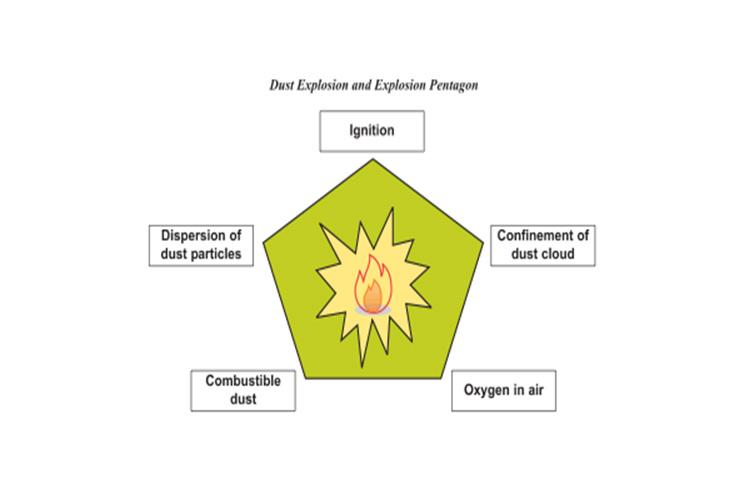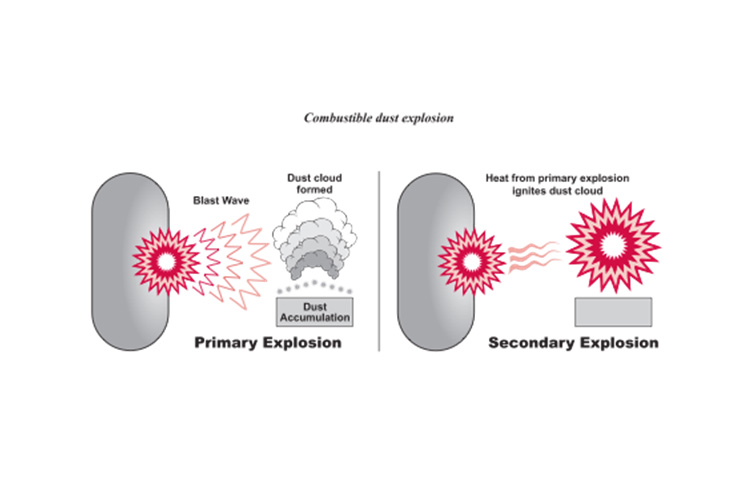There are three essential elements that must be present in order to start a fire and for a combustible dust explosion to occur. These three elements are known as the “fire triangle”; if one of these elements is missing, a fire will not occur.
The elements are a fuel source (combustible dust), heat or ignition source (electrostatic discharge, glowing ember, hot surface) and an oxidizing agent (oxygen in the air).
Two additional elements, if present, create the optimal conditions for a combustible dust explosion to occur. The first is the dispersion of dust particles in the air in sufficient quantity and concentration. The second is the confinement of the cloud of dust (in a room, building, vessel etc.)

How Dust Explosions Occur?
If all five elements are in place, a rapid burning will take place. This rapid burning can be slower than the speed of sound, called deflagration, or faster than the speed of sound, called an explosion.
What are Secondary Explosions?
Initial explosions in areas with accumulated combustible dust may displace additional dust. This displacement creates are new cloud of combustible dust, and if ignited can result in additional explosions that are far more severe than the original explosion.













